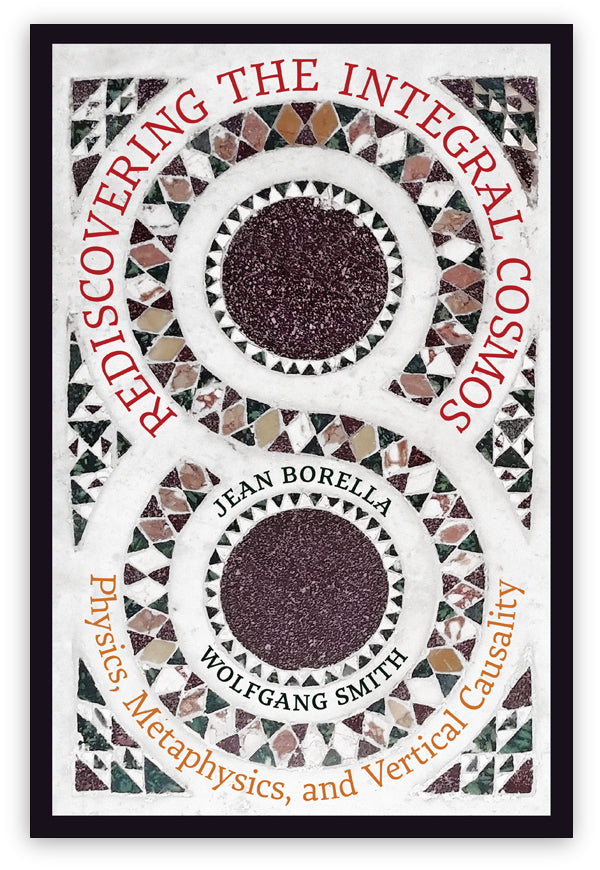Rediscovering the Integral Cosmos
Rediscovering the Integral Cosmos
Physics, Metaphysics, and Vertical Causality
By Jean Borella and Wolfgang Smith
180 pp
Couldn't load pickup availability
About the Book
When a physicist who becomes a metaphysician, and a metaphysician who studies physics, join together to deal philosophically with science (quantum physics and cosmogenesis in particular), explosive results might well be expected—and this pivotal text does not disappoint. Co-author Jean Borella, professor of philosophy and metaphysics, also earned a degree in physics. And in co-author Wolfgang Smith we have a professor of mathematics and physics who became a metaphysician. Smith explores the implications of what he terms “vertical causality,” a hitherto unrecognized mode of causation which proves to be the missing ingredient needed to make sense out of quantum physics. He explains how vertical causality brings to light the long-forgotten fact that the integral cosmos replicates the corpus/anima/spiritus constitution of man; and, moreover, that this cosmic trichotomy proves essential both to a recovery of traditional cosmology and to the advancement of contemporary science. Finally, he shows on scriptural grounds that the trichotomous cosmology accords with the teachings of Christ. Still, it was necessary for philosophy to try to explain how and why science became atheistic in the first place; and this is just what Jean Borella has undertaken in his contribution: “Is Science Through with God?” Whether we follow Borella or Smith, we return to a Weltanschauung that can finally account for the world in all its dimensions, and, especially, find its meaning—a meaning weakened by several centuries of mechanical determinism.
About the Author
View full details


